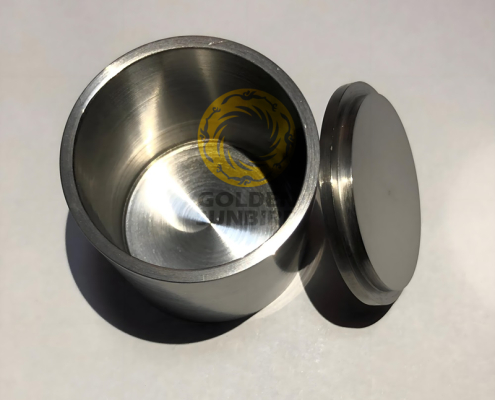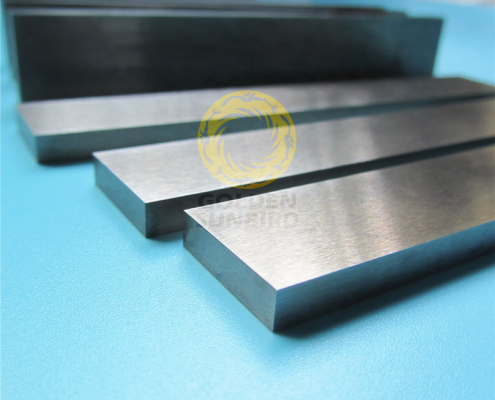Golden Sunbird Metals is a professional supplier and distributor of tungsten and tungsten alloys in China. Our tungsten alloy products are widely used in electronics, aerospace, medical radiation shielding, cutting and drilling tools, military, nuclear radiation protection, and sports equipment due to their unrivaled durability and strength as a result of their superb hardness, the highest melting point, and excellent thermal and electrical conductivity, meeting the highest specifications and quality standards in a wide range of industries. If you want to buy tungsten and tungsten alloy products in bulk or customized tungsten alloy products, don’t hesitate to contact [email protected].
FAQs
What Are Tungsten Alloys?
Tungsten alloys are composite materials that combine tungsten with other metals to enhance its properties, such as strength, density, and ductility. Tungsten, known for its high melting point and density, is often alloyed with elements like nickel, copper, and iron. These alloys are widely used in various industries, including aerospace, military, and medical fields, for applications that require materials capable of withstanding extreme conditions and stresses.
- High Melting Point: Tungsten alloys maintain their strength and stability at temperatures where other metals would melt or deform.
- High Density: These alloys are significantly denser than standard metals, making them ideal for applications requiring high mass in a small volume.
- Improved Ductility: The addition of other metals enhances the ductility of tungsten, making it more workable and suitable for a broader range of applications.
Why Are Tungsten Alloys Used in Aerospace?
Tungsten alloys are crucial in aerospace for their ability to withstand high temperatures and provide necessary weight in small spaces. In aircraft and spacecraft, components such as balance weights, vibration dampeners, and heat shields are often made from tungsten alloys. Their high density and resistance to temperature make them indispensable in ensuring the safety and efficiency of aerospace vehicles.
- Temperature Resistance: Essential for components exposed to the extreme heat of atmospheric re-entry or engine operation.
- Vibration Damping: Helps in reducing the vibrations that can affect the performance and structural integrity of aerospace vehicles.
- Precision Balancing: The high density allows for precise weight distribution, critical for aerospace navigation and control.
How Do Tungsten Alloys Benefit the Medical Industry?
In the medical industry, tungsten alloys are primarily used for their radiopaque qualities, making them ideal for shielding against X-rays and gamma radiation. Radiation therapy devices and diagnostic equipment often incorporate tungsten alloys to protect patients and healthcare workers from excessive exposure. Additionally, their high-density properties are utilized in making surgical instruments and radiation therapy collimators.
- Radiation Shielding: Protects patients and healthcare workers by absorbing harmful radiation.
- Surgical Instruments: Tungsten’s density and strength contribute to the development of durable, precise medical tools.
- Radiation Therapy Equipment: Enhances the accuracy and safety of cancer treatments by focusing radiation doses on targeted areas.
What Are the Challenges in Working with Tungsten Alloys?
Despite their numerous benefits, tungsten alloys pose challenges in manufacturing and machining due to their hardness and brittleness. Specialized equipment and techniques are required to shape and process these materials effectively. Additionally, the high melting points of tungsten alloys demand advanced casting and forging methods. The cost of these processes, along with the price of raw materials, can make tungsten alloys more expensive than alternatives.
- Machining Difficulty: Requires specialized tools and techniques to handle the material’s hardness.
- High Production Costs: The complexity of processing and the cost of raw materials increase the overall cost.
- Material Brittleness: Can lead to challenges in applications requiring materials with high tensile strength or flexibility.
How Do Tungsten Alloys Compare to Other Heavy Metals in Terms of Environmental Impact?
Tungsten alloys are considered to have a lower environmental impact compared to other heavy metals such as lead or mercury. This is primarily due to tungsten’s low toxicity and the ability to recycle tungsten alloy components effectively. The use of tungsten alloys as an alternative to lead in applications requiring high-density materials, such as in fishing weights, ammunition, and radiation shielding, reflects a shift towards more environmentally friendly practices.
- Low Toxicity: Tungsten is less toxic to humans and wildlife, reducing environmental health risks.
- Recyclability: Tungsten alloys can be recycled, minimizing waste and conserving resources.
- Reduction in Use of Hazardous Metals: By replacing more toxic heavy metals in various applications, tungsten alloys contribute to a healthier environment.
What Is the Process of Recycling Tungsten Alloys?
Recycling tungsten alloys involves collecting scrap material, sorting it based on the alloy composition, and then melting it down for reuse in new products. Given tungsten’s high melting point, recycling requires sophisticated equipment capable of reaching temperatures sufficient to melt the alloy. The recycled tungsten retains its high performance and physical properties, making it a valuable resource for manufacturing. The recycling process not only conserves natural resources but also reduces environmental impact by minimizing the need for new raw materials.
- Collection and Sorting: Essential steps to ensure that the recycled material meets quality standards.
- High-Temperature Melting: Advanced furnaces are used to melt down the scrap material for purification and reuse.
- Conservation of Resources: Recycling tungsten alloys reduces the demand for raw materials and minimizes environmental impact.
Can Tungsten Alloys Be Customized for Specific Applications?
Yes, tungsten alloys can be customized to meet the specific requirements of different applications. By adjusting the composition of the alloy, including the types and proportions of metals combined with tungsten, manufacturers can tailor the material’s properties, such as density, hardness, and thermal conductivity. This customization allows tungsten alloys to be optimized for specific uses, ranging from aerospace and automotive components to medical devices and sporting goods.
- Adjustable Composition: The alloy’s properties can be modified by changing the metal combinations.
- Optimization for Specific Uses: Customization enables the material to meet the unique demands of various industries.
- Versatility: The ability to customize tungsten alloys expands their applicability across a wide range of products and applications.
How Are Tungsten Alloys Tested for Quality and Performance?
Tungsten alloys undergo rigorous testing to ensure they meet industry standards and application-specific requirements. Tests include mechanical property assessment, such as tensile strength, hardness, and ductility, as well as physical property evaluation, including density and melting point. Advanced techniques like X-ray fluorescence (XRF) and scanning electron microscopy (SEM) are used to analyze the alloy’s composition and microstructure, ensuring that the material’s quality and performance standards are met.
- Mechanical and Physical Testing: Essential for verifying the alloy’s properties and suitability for specific applications.
- Composition Analysis: Techniques like XRF and SEM provide detailed insights into the alloy’s elemental makeup.
- Quality Assurance: Rigorous testing ensures that tungsten alloys meet the high standards required for their intended use.





